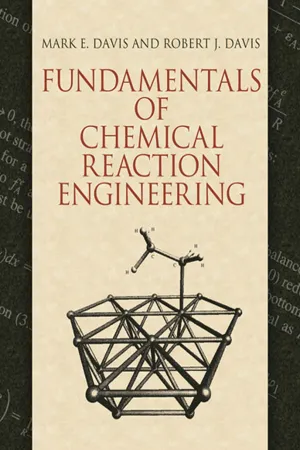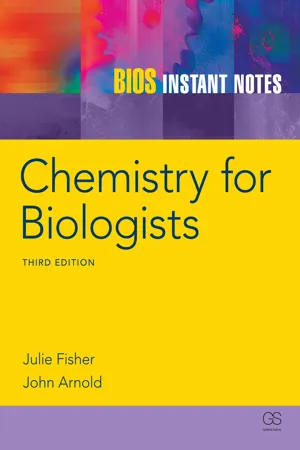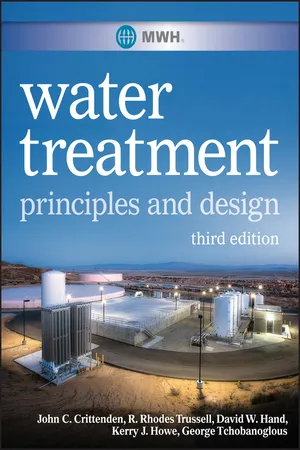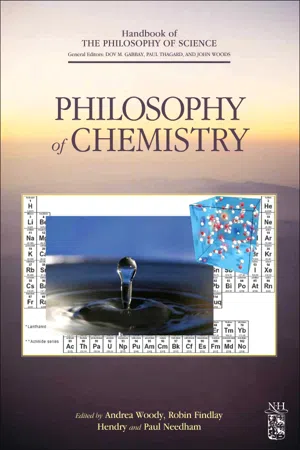Chemistry
Multistep Reaction
A multistep reaction is a chemical reaction that occurs in multiple stages, with intermediate products formed in each step before reaching the final product. Each step involves its own set of reaction conditions and may require different catalysts or reagents. Multistep reactions are common in organic synthesis and are used to create complex molecules with specific structures and properties.
Written by Perlego with AI-assistance
Related key terms
Related key terms
1 of 4
Related key terms
1 of 3
4 Key excerpts on "Multistep Reaction"
- eBook - ePub
- Mark E. Davis, Robert J. Davis(Authors)
- 2013(Publication Date)
- Dover Publications(Publisher)
CHAPTER 4The Steady-StateApproximation: Catalysis
4.1 | Single Reactions
One-step reactions between stable molecules are rare since a stable molecule is by definition a quite unreactive entity. Rather, complicated rearrangements of chemical bonds are usually required to go from reactants to products. This implies that most reactions do not proceed in a single elementary step as illustrated below for NO formation from N2 and O2 :Normally, a sequence of elementary steps is necessary to proceed from reactants to products through the formation and destruction of reactive intermediates (see Section 1.1 ).Reactive intermediates may be of numerous different chemical types (e.g., free radicals, free ions, solvated ions, complexes at solid surfaces, complexes in a homogeneous phase, complexes in enzymes). Although many reactive intermediates may be involved in a given reaction (see Scheme 1.1.1), the advancement of the reaction can still be described by a single parameter—the extent of reaction (see Section 1.2 ). If this is the case, the reaction is said to be single. Why an apparently complex reaction remains stoichiometrically simple or single, and how the kinetic treatment of such reactions can be enumerated are the two questions addressed in this chapter.There are two types of sequences leading from reactants to products through reactive intermediates. The first type of sequence is one where a reactive intermediate is not reproduced in any other step of the sequence. This type of sequence is denoted as an open sequence. The second type of sequence is one in which a reactive intermediate is reproduced so that a cyclic reaction pattern repeats itself and a large number of product molecules can be made from only one reactive intermediate. This type of sequence is closed and is denoted a catalytic or chain reaction cycle. This type of sequence is the best definition of catalysis .A few simple examples of sequences are listed in Table 4.1.1 . The reactive intermediates are printed in boldface and the stoichiometrically simple or single reaction is in each case obtained by summation of the elementary steps of the sequence. While all reactions that are closed sequences may be said to be catalytic, there is a distinct difference between those where the reactive intermediates are provided by a separate entity called the catalyst - eBook - ePub
- J Fisher, J.R.P. Arnold, Julie Fisher, John Arnold(Authors)
- 2020(Publication Date)
- Taylor & Francis(Publisher)
elementary steps are required; involving bond making and breaking, the formation of stabilizing interactions, the formation of intermediates, and so on. All of these steps must be known for the mechanism of the reaction to be understood. The mechanism of any reaction must be able to account for the overall stoichiometry and the rates determined for each of the steps involved.To illustrate the difference between molecularity and stoichiometry consider the conversion of hydrogen peroxide to oxygen and water, a reaction which is catalyzed (that is accelerated) by the presence of iodide ions (Figure 1 ).Figure 1 The iodide catalyzed conversion of hydrogen peroxide to oxygen and water.As both reactions (1) and (2) involve two reagents, each reaction is said to have a molecularity of 2, or to be bimolecular. To rationalize the rate expression on the basis of a two-step mechanism, it has to be assumed that the rate of step (1) is very much slower than the rate of step (2); therefore step (1) is the rate determining step. This is a trivial example, but serves to illustrate that complete understanding of chemical reactions comes from a knowledge of molecularities, not from reaction orders.Unimolecular reactions
Unimolecular reactions are those that involve only one type of molecule in an elementary step. This is quite a difficult concept to grasp. To help rationalize observations that such reactions do indeed occur, examples of such processes include thermal decompositions, cistrans isomerizations, and so on. Lindermann, in 1922, proposed that a reactant molecule A, must collide with another like molecule. After the collision one of the molecules, A*, is more excited, at the expense of the other A, and has sufficient energy to convert into a product (Figure 2 - No longer available |Learn more
MWH's Water Treatment
Principles and Design
- John C. Crittenden, R. Rhodes Trussell, David W. Hand, Kerry J. Howe, George Tchobanoglous(Authors)
- 2012(Publication Date)
- Wiley(Publisher)
Many reactions proceed as a series of simple reactions between atoms, molecules, and radical species. A radical species is an atom or molecule containing an unpaired electron, giving it unusually fast reactivity. A radical species is always expressed with a dot in the formula (e.g., HO•). Intermediate products are formed during each step of a reaction leading up to the final products. An understanding of the mechanisms of a reaction may be used to improve the design and operation of water treatment processes.Elementary Reactions
Reaction mechanisms involving an individual reaction step are known as elementary reactions. Elementary reactions are used to describe what is happening on a molecular scale, such as the collision of two reactants. For example, the decomposition of ozone (in organic-free, distilled water) has been described by the following four-step process (McCarthy and Smith, 1974):5.155.165.175.18In this series of elementary reactions, ozone reacts with water to form, among other compounds, HO• (hydroxyl radical) and HO2 (superoxide), which are very reactive and sometimes used for the destruction of organic compounds.Overall Reactions
A series of elementary reactions may be combined to yield an overall reaction. The overall reaction is determined by summing the elementary reactions and canceling out the compounds that occur on both sides of the reaction. For the elementary reactions shown in Eqs. 5.15 to 5.18 , the overall reaction may be written as5.19The specific reaction mechanism and intermediate products that are formed cannot be determined from the overall reaction sequence. In many cases the elementary reaction mechanisms are not known and empirical expressions must be developed to describe the reaction kinetics.Reaction Catalysis
A catalyst speeds up a chemical reaction, but it is neither consumed nor produced by the reaction. For a reaction between two molecules to occur, the molecules must collide with the proper orientation. However, molecules have a tendency to move in ways that make the proper orientation less likely. For example, molecules move about their axis in two directions (called a rotation and a translation) and they vibrate. Adsorption and reaction on a catalyst surface reduce this motion and increase the local concentration of reactant. - eBook - ePub
- Dov M. Gabbay, Paul Thagard, John Woods(Authors)
- 2011(Publication Date)
- North Holland(Publisher)
Gould, 1959 , p. 127]. This is what one might expect, given the explanation above of why thin mechanisms suffice for developing an understanding of organic chemistry. Second, these mechanisms break a chemical reaction down into a sequence of steps. For instance, Lowry and Richardson say: “A reaction mechanism is a specification, by means of a sequence of elementary chemical steps, of the detailed process by which a chemical change occurs” [Lowry and Richardson, 1987, p. 190]. These two features of mechanisms are related and both are important to the role of mechanisms in understanding chemical reactions.Providing information about the important intermediate structures in a transformation, such as the transition state or stable intermediates, allows the organic chemist to perform structural analysis of the relative energies of these intermediates. A structural analysis, in turn, enables one to predict or explain relative energy differences between structures based on a small set of robustly applicable and easily recognizable structural features. These relative energy differences can then, with the aid of the standard theoretical models of chemical transitions, be used to infer important empirically measurable features of chemical reactions such as relative rates or product distributions. 7 In this way, structural analyses of the relative energy differences between important intermediates in the course of a chemical transformation are the modern realization of Butlerov's goal to explain all the chemical properties of substances on the basis of their chemical structures. 8
Index pages curate the most relevant extracts from our library of academic textbooks. They’ve been created using an in-house natural language model (NLM), each adding context and meaning to key research topics.
Explore more topic indexes
Explore more topic indexes
1 of 6
Explore more topic indexes
1 of 4



